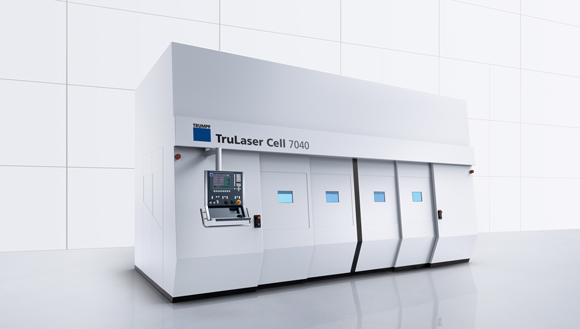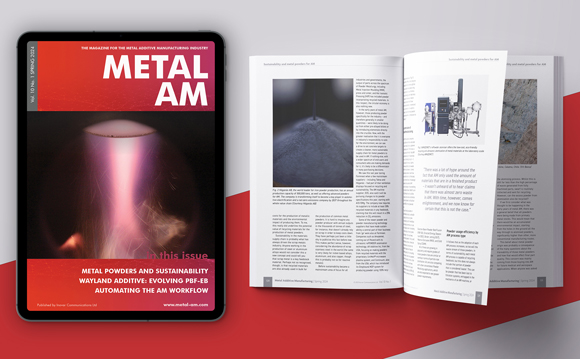TWI to employ Trumpf system as part of Open Architecture Additive Manufacturing project
March 12, 2019

Trumpf’s TruLaser Cell 7040 five-axis machine with a disk laser and LMD functionality (Courtesy Trumpf)
TWI Ltd, Rotherham, UK, has announced its purchase of a TruLaser Cell 7040 five-axis machine with a disk laser and Laser Metal Deposition (LMD) functionality, produced by Trumpf, Ditzingen, Germany. The machine will be installed at TWI’s facility where it will be used as part of the Open Architecture Additive Manufacturing (OAAM) project, for which TWI is lead partner.
The OAAM project, which is supported by Innovate UK (ref:113164), commenced on the 1 January 2018 and will run for three years. The project aims to develop Directed Energy Deposition (DED) Additive Manufacturing technologies that can be scaled up to accept multi-metre component sizes for the benefit of UK Aerospace. These new platforms are expected to enable aerospace manufacturers and their supply chains to develop advanced Additive Manufacturing concepts.
“We’ve been running several LMD systems on both industrial robot manipulators and a Trumpf DMD 505 gantry-type five-axis cell for the past fifteen years,” stated Dr Carl Hauser, Section Manager, Laser Additive Manufacturing at TWI. “Although the Trumpf machine still functions perfectly well, being part of the OAAM project allowed us to consider our options and specify a new high-precision system to meet the growing needs of the aerospace industry and of TWI member companies. After an assessment, the decision was made to invest in a new large scale five-axis gantry facility for laser Additive Manufacturing.”
The TruLaser Cell 7040 features several important modifications which are believed to make it unique in the marketplace. Now, Trumpf and TWI are working in close cooperation to deliver a system that will meet the specific requirements of the OAAM project. This work has led to the specification of a number of critical adjustments to the standard system – for instance, the machine’s 1 m Z-axis capacity will be extended to 1.5 m in order to accommodate large aerospace parts, coupled with a 4 m x 2 m capacity X-axis and Y-axis.
In addition to the machine’s five-axis capability, there will be a fully-integrated rotate and tilt table with a 1500 kg load capacity, controlled by special software routines specified by TWI and developed by Trumpf. This will be further supported by Autodesk, which is developing common CAD/CAM control interfacing across the OAAM DED technologies. The modularity of the TruLaser Cell is also expected to enable TWI to integrate additional process steps (e.g., non-destructive inspection systems) for optimum implementation to aerospace requirements.
“The OAAM project will steer the development of large-scale 3D printed aerospace parts, typically aero body and fuselage components, but also engine casings and landing gear parts, for example,” added Hauser. “The new Trumpf machine will be an integral and critical resource to drive our organisation forward, not just on the OAAM project, but for many years beyond.”
















